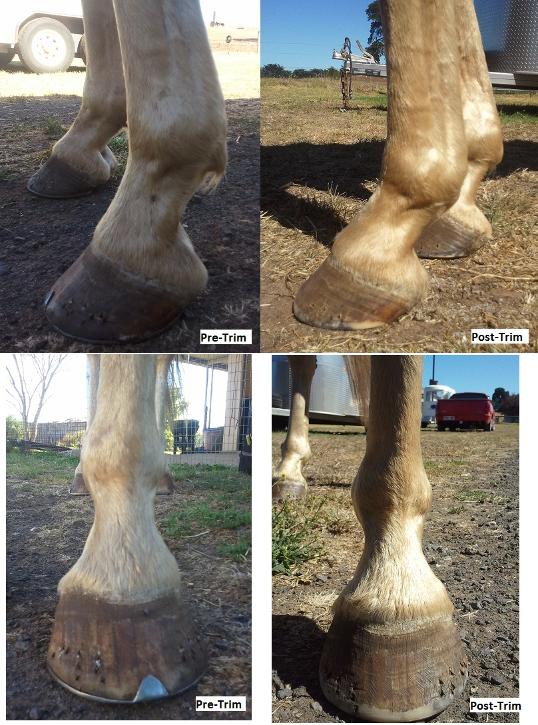Here are a few case study examples of horses that I have worked on, to show you the difference that functional hoofcare can make to a horses feet...
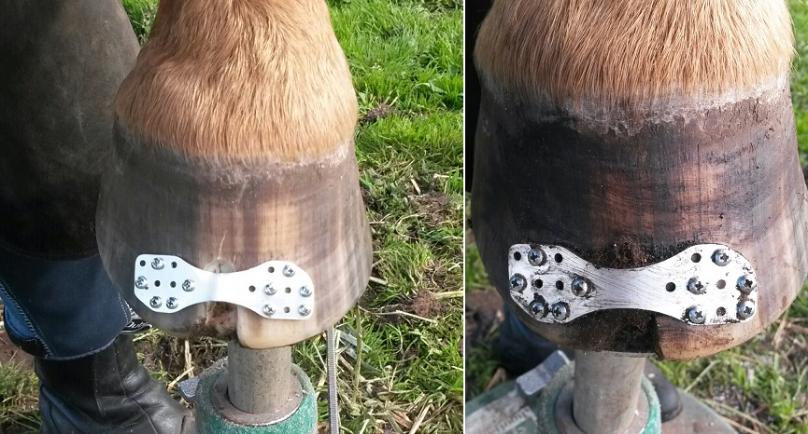
Resection for Seedy Toe (White Line Disease) above and then application of a hoof wall brace. The hoof wall does not really need bracing BUT I use it as part of treatment by helping to hold in a product called "Black Healer"and then pack it in with wool. This method will keep the wool in place for around 2 days, treating the seedy toe this way will give a much better chance of success.
Seedy Toe can be a really tough pathology to successfully get rid of as it feeds off keratin, which the entire hoof is made of. Treatment needs to be strong enough to kill the bacteria without affecting the rest of the hoof tissue. Black Healer was developed by the Barefoot Blacksmith to be used in conjunction with peroxide and has proven to be one of the most successful treatments. I stock Black Healer myself so it is on hand when needed (350g tub $25).

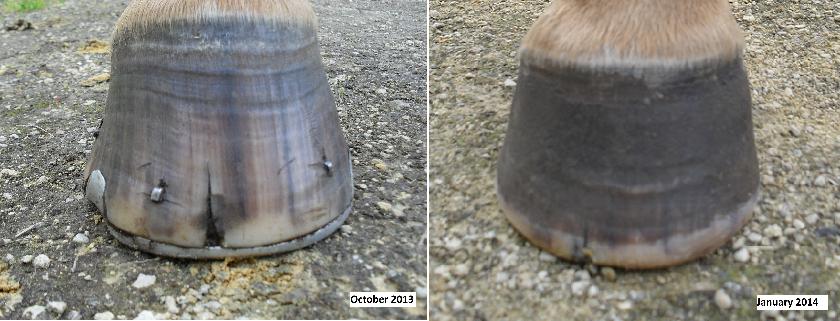
Off side fore showing the dorsal wall crack and improvement in growing it out by keeping the weight off the outer wall, also note the difference in the size of the hoof capsule over the period of time. A tighter more compact foot is much hardier than a hoof with excessive growth, flaring, etc.
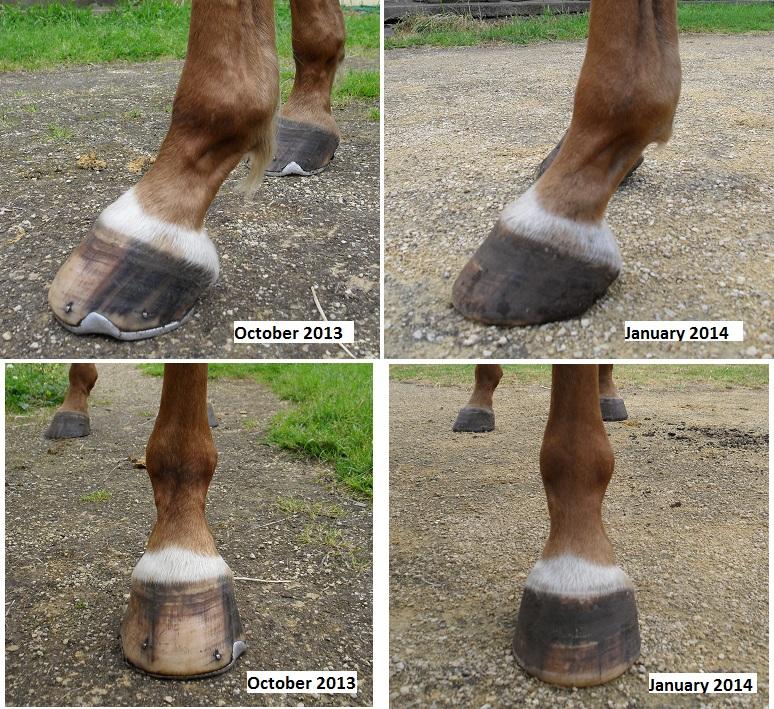

TheTB x RP Mare above had been diagnosed with Navicular Disease several years earlier.
Her caudal foot (back) was not very well developed due to being fitted with heart bar shoes as part of her treatment.
When we removed the shoes, trimmed her feet to a "barefoot" trim with an engaged heel and frog and put her into boots and pads we soon saw a difference in her movement and she was much lighter and happier under saddle.
After about 6 months we could see a big difference in the comfort levels of this mare, after 12 months she will happily travel over any type of footing (rocky ground, concrete, etc) without hesitation and she does not need boots at all. There are no signs of Navicular Disease despite her having suffered from it for many years prior to removing her shoes.
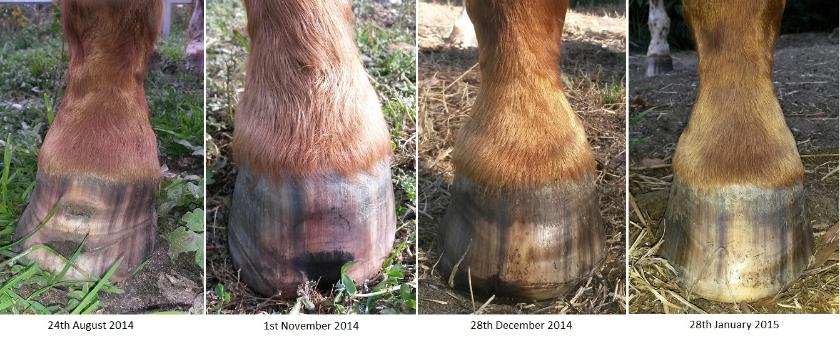
TB gelding who blew out 2 abscesses in his near fore, one after the other.
Not a huge amount of lameness but the hoof wall was quite compromised as you can see from the pics. By keeping a big roll on the toe area of the hoof and making sure there was no hoof wall weight bearing we were able to grow the hoof wall down without any cracks or chips developing. Trimming was done every 3 weeks during this period.
